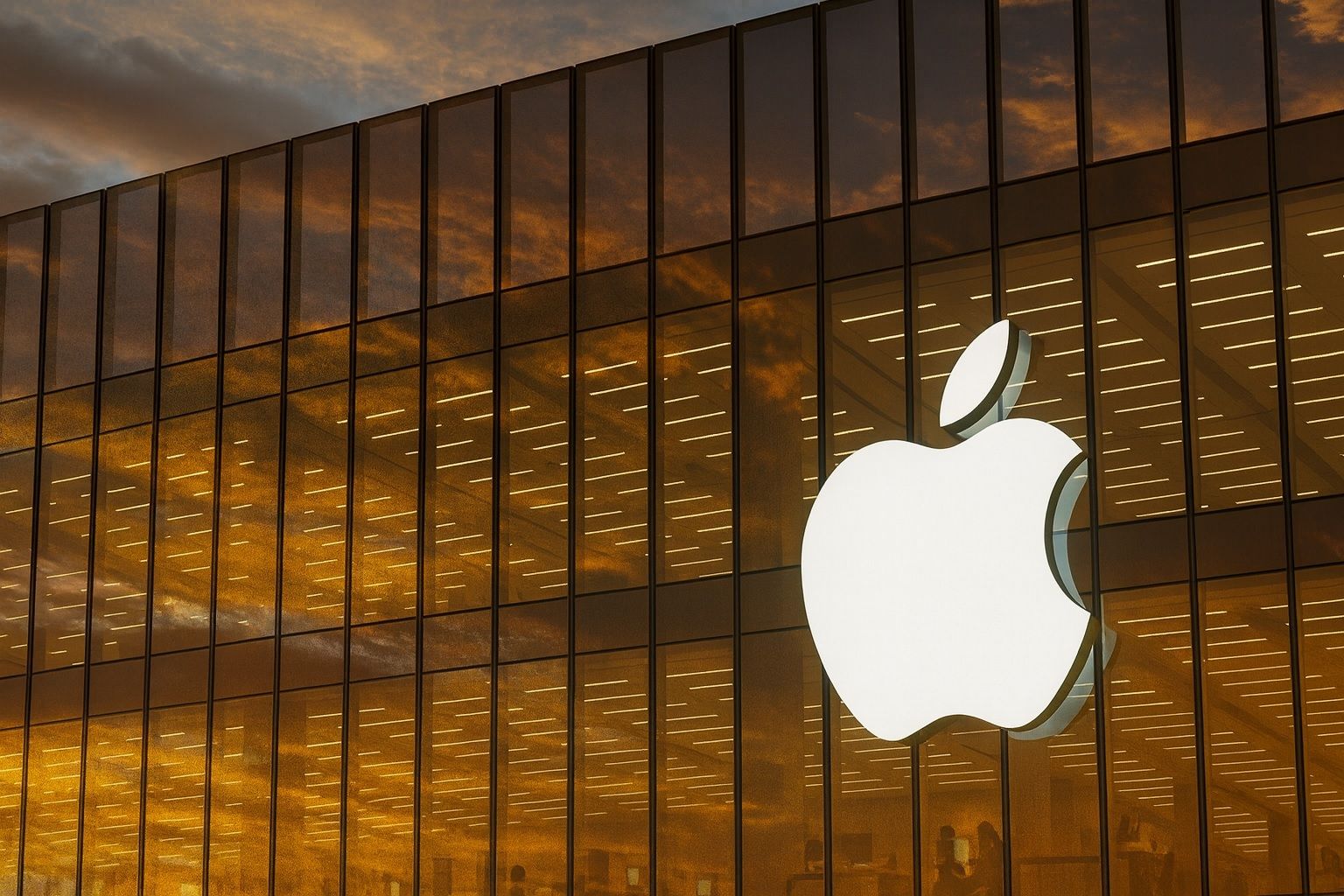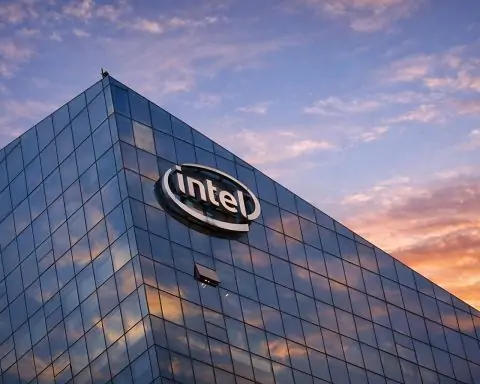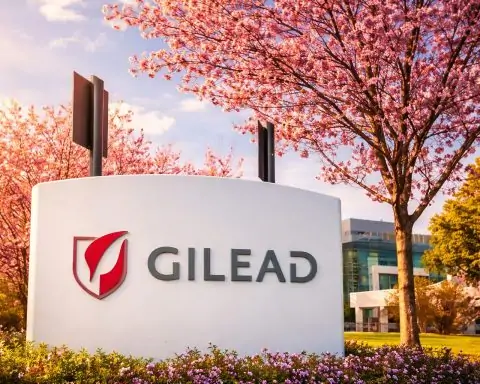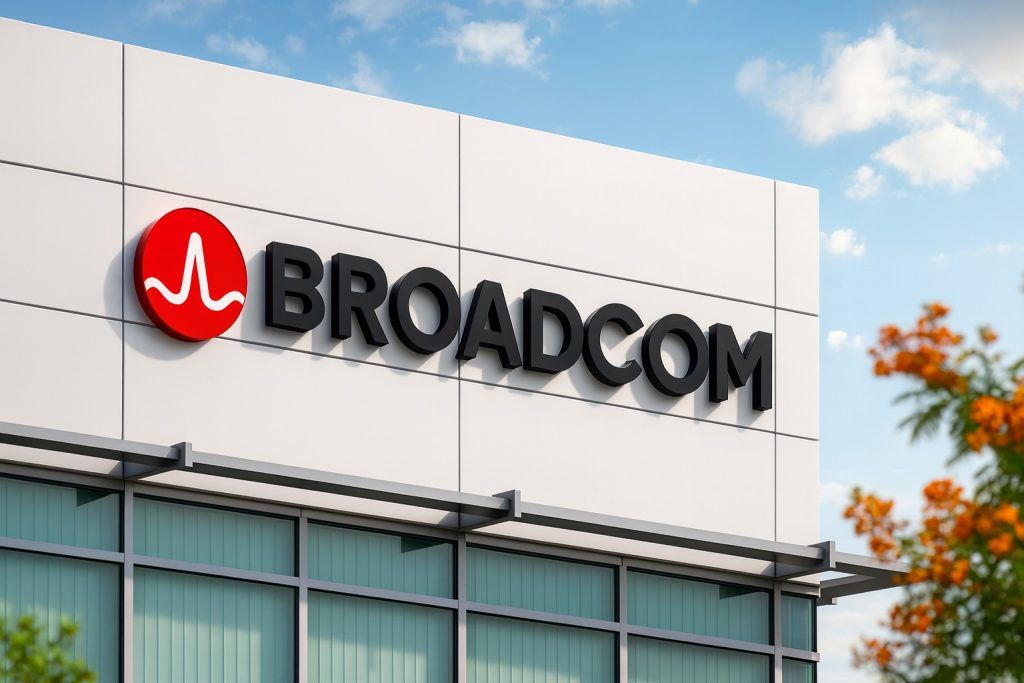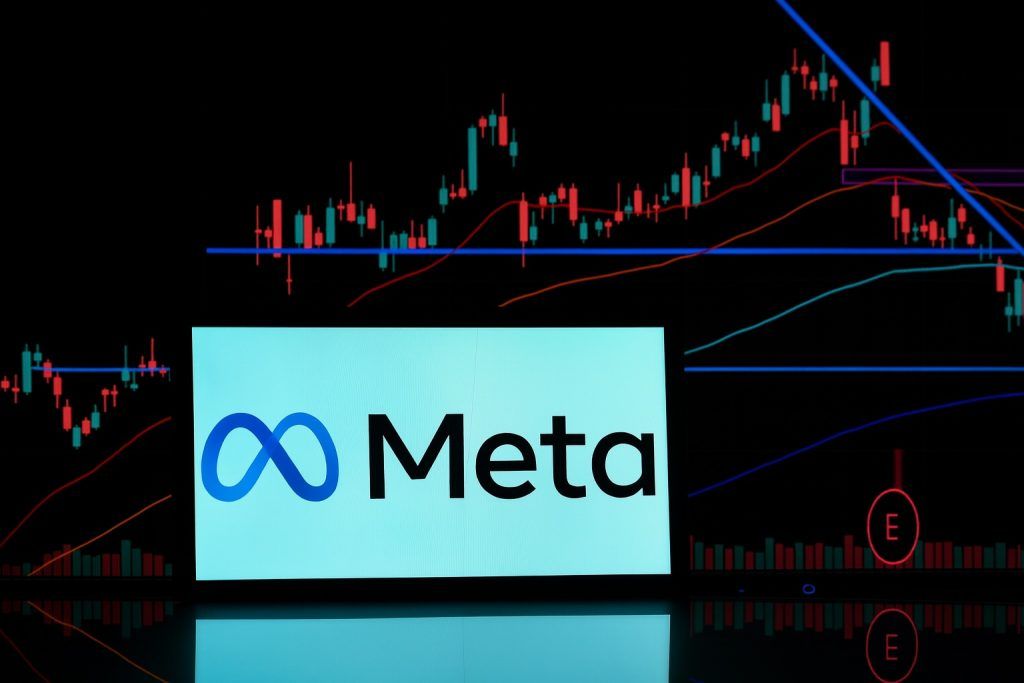- Apple (AAPL) stock has surged above $260 recently, nearing its all-time high (market cap ~$3.9 trillion), fueled by excitement over the new iPhone 17 lineup [1] [2].
- New product momentum: Analysts call the iPhone 17 launch a potential “supercycle” of upgrades. Wedbush’s Dan Ives raised his 12-month target to $310, citing “record iPhone 17 demand” and new on-device AI features [3]. Morgan Stanley and BofA also issued bullish outlooks (targets ~$240–270) on Apple’s growing user base and services [4] [5].
- Cautions remain: Some experts urge caution. Jefferies’ Edison Lee sees Apple as overvalued near current highs, cutting his target to ~$205 and warning that expectations for future iPhones may be “excessive” [6] [7]. UBS is neutral (Hold, $220 target), noting the initial iPhone 17 sales spike could level off as global smartphone demand plateaus [8] [9].
- Earnings and sales: Apple’s Q3 2025 results (reported late July) were strong – revenue of $94.0 billion (up ~9.6% YoY) and EPS $1.57 (vs. $1.43 expected) [10]. The company raised its guidance for Q4 to mid-to-high single-digit revenue growth. Early data show iPhone 17 models are outselling last year’s (Counterpoint Research says +14% in first 10 days in US/China) [11] [12], and Apple even grew smartphone shipments in China in Q3 (+0.6% YoY, the only top vendor to do so) [13].
- Tech factors: Beyond the iPhone, Apple surprised markets on Oct 15 by quietly releasing new hardware – a 14″ MacBook Pro, new 11″ and 13″ iPad Pro models, and a second-generation Vision Pro mixed-reality headset, all powered by its new M5 chip [14] [15]. Notably, Apple kept prices flat on these upgrades [16], signaling it’s focused on adoption and ecosystem growth in the face of inflation. The company is also emphasizing AI, with CFO Luca Maestri saying Apple is “increasing our investment significantly in AI” and CEO Tim Cook promising a more capable Siri and new on-device intelligence [17] [18].
- Macro & regulatory context: Broader conditions are mixed. The Federal Reserve cut rates to 4.00–4.25% in mid-September [19], helping tech stocks, and the 10‑year U.S. yield is near six-month lows (~3.98%) [20]. Apple also pledged an additional $100 billion U.S. investment to ease tariff worries [21]. However, new regulation looms: on Oct 22, EU regulators received a complaint accusing Apple’s App Store rules of violating antitrust laws [22] (Apple responded that the claims are “false” and said it’s working on fixes). A deal with EU authorities is reportedly near, which would ease uncertainty, but Apple must ultimately open iOS to more third-party apps (as required by Europe’s Digital Markets Act) [23].
Apple shares have hit new highs on strong iPhone 17 demand and solid earnings. Reuters reports the stock jumped over 4% to about $262.90 on Oct 20, giving Apple a ~$3.9 trillion valuation [24]. By Oct 22 it was trading near $258, roughly 5% above its early 2025 level [25]. Investors note that Apple has largely outperformed a sluggish broader market: year-to-date Apple is slightly up, whereas many tech peers rallied even more aggressively [26]. In the past few weeks AAPL has been consolidating in the $255–$263 range, awaiting the Q4 earnings report (due Oct 30) and digesting recent product news [27] [28]. Technical analysts say the stock remains in an uptrend above its 50-day moving average, with key support around $250 [29] – but a move above ~$263 could open the door toward $275–$280 in the coming months [30] [31].
Analysts and experts are split on Apple’s outlook. On the bullish side, Wedbush’s Dan Ives (Outperform) has raised his 12-month target to $310, forecasting a “golden era” driven by Apple’s huge upgrade cycle [32]. He notes that Apple has “hundreds of millions” of older iPhones still in use, and calls the iPhone 17 launch plus Apple’s new AI features a catalyst for growth. Similarly, Morgan Stanley sees Apple’s massive install base as a tailwind: its team (lead analyst Katy Huberty) expects the existing base of pent-up iPhone demand and incremental AI enhancements to “accelerate iPhone growth starting in FY26” [33]. Bank of America (Wamsi Mohan) also remains bullish (Buy, $270 target), highlighting Apple’s pricing power and upgrade incentives. Mohan points out that Apple modestly raised iPhone prices this year but offset the increase with better trade-in deals – a strategy he believes will “spur additional upgrades.” BofA projects Apple could reach about $8.40 EPS in 2026 (up from its prior $8.37 forecast) [34], reflecting sustained earnings growth.
On the other hand, some analysts warn that Apple may be fully valued. Jefferies’ Edison Lee cut Apple to Underperform (target ~$205), arguing current prices “imply more than twice” the iPhone unit sales he forecasts and reflecting “excessive expectations” for future models [35] [36]. UBS (David Vogt) is neutral (Hold, $220), noting that the spike in iPhone 17 orders might already be peaking and that worldwide smartphone demand is leveling off [37]. Reflecting this mix, the consensus rating remains Buy/Outperform, but price targets range widely. According to MarketBeat/Wall Street data, the median target is roughly $245–$250 (near the current price), suggesting limited near-term upside on average [38]. Top bulls, however, still see Apple reaching the $300s if the upgrade cycle and services growth play out.
Products and Earnings Catalysts: Apple’s latest results and launches support the bullish case. Fiscal Q3 (ended June 2025) sales reached a record $94.0 billion (up +9.6%), with iPhone revenue alone jumping ~13% to $44.6 B [39]. Every segment grew – Macs, iPads and Services all contributed – and gross margins held near 46.5%, above estimates [40]. Management raised the next quarter’s revenue guidance to mid/high single-digit growth [41], a significant step-up. Most investors credit a strong iPhone 17 launch: all models (base, Pro, Pro Max, and the new iPhone 17 Air mid-tier variant) hit stores in late September, and early reports (from retailers and analysts) point to brisk demand. In fact, shipping lead times on new iPhone 17 models are longer than last year’s iPhone 16 at this point [42], indicating strong take-up (especially in key markets like China where Apple is the only major vendor with growth [43] [44]).
Beyond the iPhone, Apple’s October hardware releases added fuel. Without a public event, Apple rolled out refreshed devices on Oct 15 [45]: the all-new 14″ MacBook Pro and updated 11″/13″ iPad Pro (all using the next-gen M5 chip) and a second-generation Vision Pro mixed-reality headset. The M5 chip (3-nm process) promises major speed and AI gains, and Apple notably kept prices unchanged from previous models [46]. Analysts view this as a user-friendly move: by boosting performance at the same price, Apple encourages upgrades. These updates, combined with the iPhone 17 cycle, have many investors optimistic that Apple’s holiday-quarter sales will be strong.
Economic & Regulatory Context: Apple’s stock is also moving on macro factors. With inflation cooling, the Fed cut rates to the 4.00–4.25% range in mid-September [47]. Lower borrowing costs and a weaker dollar (for exporters) help tech shares generally. Apple itself has tried to shield against trade tensions: for example, it pledged an additional $100 B U.S. investment (over 5 years) to avoid higher tariffs [48]. These actions helped lift sentiment earlier this year after tariffs fears had pressured the stock. On the flip side, new regulations could bite. In Europe, Apple faces scrutiny under the Digital Markets Act (DMA). Civil rights groups recently filed an antitrust complaint alleging Apple’s App Store rules violate the DMA [49]. Apple dismissed these claims, but to comply with the law it has already begun easing some restrictions (allowing link-outs to alternate app stores, adjusting developer fees). Reports suggest a deal is close with EU regulators that would avoid massive daily fines [50]. Still, opening iOS to third-party stores will limit Apple’s control (and revenue from the App Store) over time. In the U.S., Apple won an appeals ruling in its Epic Games case and has fended off some antitrust probes, but further legal or policy changes could pressure its services income.
Outlook – Short and Long Term: In the near term, most Wall Street analysts are optimistic. If Apple’s holiday-season demand remains strong, the stock could climb into the $270–$280 range before year-end [51] [52]. However, some technical signs suggest a breather is possible: Apple’s RSI reached overbought levels around $260 [53], and a cautious pullback to support near $250–$255 could occur before any new catalyst. The big trigger will be Apple’s Q4 earnings on Oct 30. Investors will watch the company’s guidance for December-quarter sales (especially iPhones and wearables) and any comments on the services business or supply chain.
For the long term (2026 and beyond), opinions diverge. Consensus forecasts imply Apple’s revenue growth will moderate to the mid-single-digit range as the smartphone market matures. In that view, Apple is still a cash cow – analysts note its roughly $100 B annual profit and huge free cash flow [54] – but the stock trades at about 30× forward earnings, which is high for a slower-growth company [55]. The bullish camp argues Apple’s massive base of active devices (~1.5 billion globally [56]) and expanding ecosystem (services, payments, AR/AI) provide new growth levers. Wedbush and others think Apple can eventually join the “$4–5 trillion” market-cap club if it executes well on AI and new hardware categories [57] [58]. The bearish camp says that without a truly new hit product, Apple may just tread water, making modest improvements with existing lines. In summary, the median Wall Street price target (~$245–$250 [59]) suggests analysts see limited upside from today’s prices, but the outliers are placing big bets on continued growth.
Bottom Line: Apple’s stock is at a crossroads. Recent product success and earnings beats have investors cheerful, but much depends on the holiday quarter results and 2026 guidance. In the short term, the iPhone 17 cycle and October upgrades could keep momentum going. Over the long haul, Apple’s fortunes will hinge on how it tackles AI, augmented reality, and global competition. As B. Riley’s Art Hogan puts it, right now Apple “rolled out the latest version of their iPhone and it’s doing much better than anticipated” [60]. The question is whether this strength proves sustainable.
Sources: Authoritative tech and financial news reports and analyses were used, including Reuters, Investopedia, MarketBeat, and ts2.tech. Key quotes and data are cited above.
References
1. www.reuters.com, 2. www.investopedia.com, 3. ts2.tech, 4. ts2.tech, 5. ts2.tech, 6. ts2.tech, 7. ts2.tech, 8. ts2.tech, 9. www.techi.com, 10. ts2.tech, 11. www.reuters.com, 12. www.investopedia.com, 13. www.reuters.com, 14. ts2.tech, 15. www.reuters.com, 16. www.reuters.com, 17. ts2.tech, 18. ts2.tech, 19. www.federalreserve.gov, 20. www.investopedia.com, 21. www.reuters.com, 22. www.reuters.com, 23. ts2.tech, 24. www.reuters.com, 25. www.reuters.com, 26. ts2.tech, 27. ts2.tech, 28. www.reuters.com, 29. ts2.tech, 30. ts2.tech, 31. ts2.tech, 32. ts2.tech, 33. ts2.tech, 34. ts2.tech, 35. ts2.tech, 36. ts2.tech, 37. ts2.tech, 38. ts2.tech, 39. ts2.tech, 40. ts2.tech, 41. ts2.tech, 42. ts2.tech, 43. www.reuters.com, 44. www.investopedia.com, 45. www.reuters.com, 46. www.reuters.com, 47. www.federalreserve.gov, 48. www.reuters.com, 49. www.reuters.com, 50. ts2.tech, 51. ts2.tech, 52. ts2.tech, 53. ts2.tech, 54. ts2.tech, 55. ts2.tech, 56. ts2.tech, 57. ts2.tech, 58. ts2.tech, 59. ts2.tech, 60. www.reuters.com
